by John Brown, HaveFunBiking.com
Disc brakes are taking over the cycling world. It is becoming more difficult to find a new bike without them and that’s for some good reasons. Disc brakes are more powerful, more consistent and more durable than a standard brake. With any new product there are new things you need to learn and here are a few tips we would like to share.
Just because your new bike has disc brakes, doesn’t mean that everything is new. In fact, the skills you learned to take the wheel off your old bike with rim (pad) brakes are still completely relevant. Specifically, if you know how to operate a quick release, you can take the wheel off a bike with disc brakes. Consequently, with a disc, there is actually less to worry about than with a standard rim brake. However, if you don’t know how a quick release or thru axle works, read below.
A quick release allows you to remove your wheel without tools. Moreover, the quick release is installed through the center of your wheel allowing you to clamp the wheel into the bike. Basically, a quick release is a very long bolt with a cam lever on the end. It’s the cam lever that gives the quick release its powerful clamping force. To remove your wheel, simply flip the lever open, and remove the wheel. If it’s a front wheel, you will also need to unthread the quick release nut on the opposite side from the lever.
Flipping the lever open widens the quick release. This action is what gives a quick release it’s clamping force.
Quick release levers are marked “open” and “closed” on the lever. Be sure to always close the lever when tightening the quick release lever in place. If the wheel is tight, and you can read “open” the quick release lever is not installed properly.
Thru axles work similarly to quick release levers. The main difference is that a thru axle needs to be threaded out of the frame and removed completely for the wheel to come out. Consult your bike manufactures manual for the details on how to remove your thru axle.
The main difference is that a thru axle needs to be threaded out of the frame and removed completely for the wheel to come out. Consult your bike manufactures manual for the details on how to remove your thru axle.
Thru Axles slide through both frame and wheel and thread into place.
When it comes to removing a wheel, the main difference is knowing if your disc brakes on your new bike are mechanical or hydraulic disc brakes. The differences come with the way that lever force is transferred to the caliper or pad around the brake disc rotor. At one end there is a cable that operates the brake system, sometimes referred to as mechanical disc brakes. In contrast hydraulic disc brakes use a sealed, fluid filled system as the means apply pressure. In the case of the mechanical disc brake you don’t need to worry about anything. You can open the quick release and remove the wheel with no other issues. For hydraulic disc brakes, you only need to take care not to squeeze the brake lever if the wheel is not in place in the bikes caliper.
You shouldn’t squeeze the lever without a disc rotor in place. This is because of hydraulic disc’s auto adjusting pad (caliper) wear valve. If you make the mistake of squeezing the lever without a disc rotor in place. The valve adjusts as if you just wore through 3mm of pad material (the thickness of a rotor). If this happens, don’t worry, just get a flat piece of clean, oil free, metal to pry the pads back apart again. Even if you spread those pads too far out, once the rotor is back in, a few squeezes of the lever will get the brake adjusted properly again.
When replacing the wheel on a disc bike, there is one new detail to take into consideration. Generally speaking, the wheel fits into the bike normally. Just verify that the rotor is inserted into the caliper (pad) properly. For instance, if the rotor isn’t centered into the caliper, it will rub. Therefore, verify that the wheel is centered in the bike straight.
Whether you are taking your mountain bike for a ride on the local trails, packing your cruiser bike for a trip to the beach or bringing your road bike along for family vacation, you may find yourself needing to remove the front wheel to take your bike where you want to go. Removing a wheel from your bike will make it easier to fit in the back of your car and some bike racks require the front wheel to be removed before you can strap your bike into the rack. You will also need to know how to remove a wheel if you get a flat tire. Check out our video on how to remove a bike tire and fix your flat.
A quick release axle has a 5mm rod with a camming lever on one side and a nut on the other and its function is to allow you to remove the wheel of your bicycle without the use of a tool. A quick release axle also allows you to remove the wheel without removing the axle. The axle will stay inserted in the hub.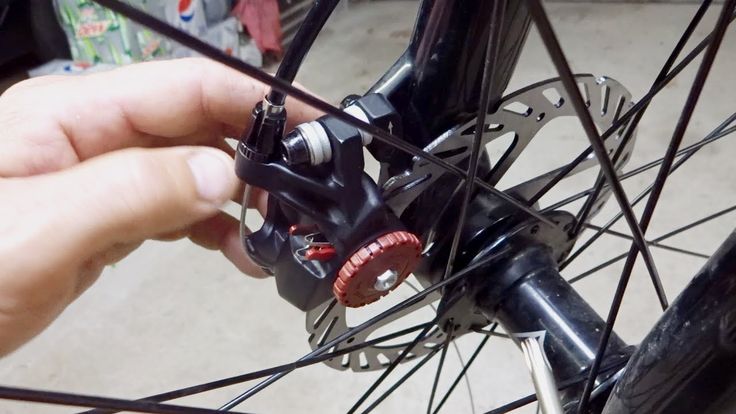 All you have to do is pull the lever to the open position and loosen the nut on the other side.
All you have to do is pull the lever to the open position and loosen the nut on the other side.
Some bike hubs (particularly mountain bikes) require larger axles (12mm, 15mm or 20mm), which are called thru axles. These axles also have a camming lever on one side of the hollow rod, while the other side is threaded into the fork. This system allows you to remove the wheel without the use of any tools BUT you do have to remove the axle from the hub to take your wheel off of your bike.
If you have a bike rack on top of your car that requires you to remove your front wheel, make sure you have the correct adapter for your bike’s axle!
1. Release Your Brakes: If your bike has rim brakes or cantilever brakes, you will need to release the cable tension so you can remove your front wheel. For rim brakes, there should be a lever near the caliper that will release some cable tension, thus allowing your brake pads to be far enough from the rim for your tire to slide past them.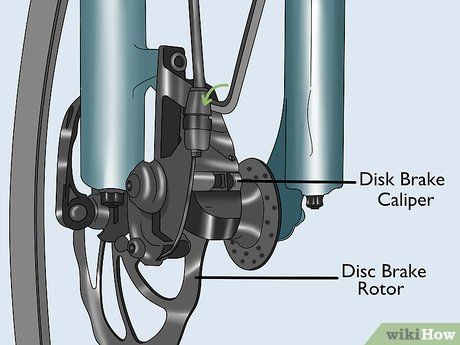
2. Flip Your Bike Over: Flipping your bike over to remove your wheels is ideal, unless you have a mechanic stand handy. When you are changing a flat tire on the side of the road or trail, allowing your bike to rest on the seat and handle bars will give you a more stable platform to work with. Flipping your bike over makes things a little easier and reduces the risk of your bike falling over after the wheel is removed.
3. Open the Quick Release or Remove Axle: If your bike has a quick release, flip the lever into the open position. If the lever is tight, you can use a tire lever to pry it open. Holding the lever still, loosen the bolt on the other side of the axle, but DO NOT remove the bolt completely. For thru axles, open the lever into the open position and turn the lever counter-clockwise to unthread the axle and remove it from the hub.
4. Lift the Wheel Up and Out of the Fork: Make sure you do not dislodge your calipers if you have rim brakes and be careful with rotors if you have disc brakes.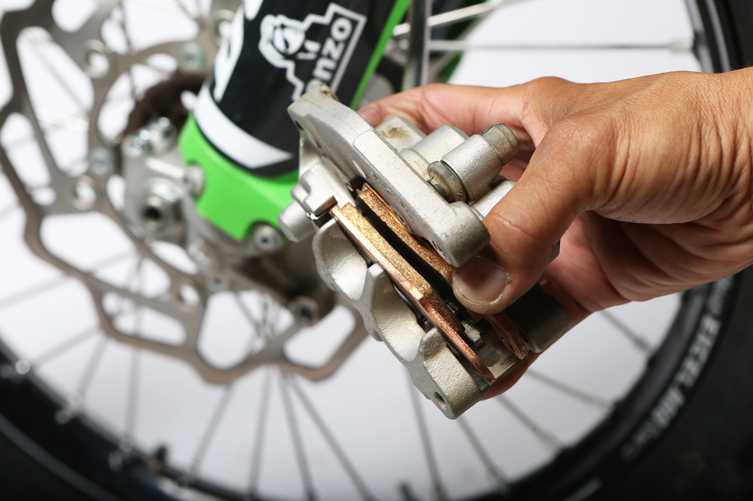
1. Guide Your Wheel Back Into The Fork: If you have rim brakes, be careful not to dislodge calipers when you reinstall your wheel. If you have disc brakes, guide the rotor in between the brake pads.
2. Tighten the Axle: If you have a quick release axle, settle the wheel completely into the dropouts. Make sure the quick release axle is on the non-drive side of the bike, matching the wheel. Holding the lever in place, tighten the nut on the opposite side and push the lever into the closed position. It should feel tight, but it should not be too difficult to close the lever. If you have a thru axle, line up your hub with the holes at the bottom of your fork. Look to see which side of the fork is threaded and push the axle in through the opposite side. Turn the lever clockwise to thread the axle into the fork. Once tight, push the lever into the closed position.
3. Flip your bike over: If you have cantilever or rim brakes, make sure your brake cable is reconnected or tightened properly.
4. Spin your wheel: By spinning your wheel, you will make sure your brake pads are not rubbing the rim or the rotor. If your wheel does not spin, it could be crooked in the fork’s dropouts. Flip your bike back over, loosen your axle, push down on the wheel and tighten the axle again.
Need to learn how to remove your rear wheel? Check out our video!
Helpful Tip: If you have hydraulic disc brakes do not squeeze the front brake after you have removed your front wheel. The brake pads will move closer together and you will not be able to get the brake rotor back between the pads. If your brake lever is accidently compressed, the ideal tool to separate the pads is a pad separator tool. If you do not have this tool, you can use a flat bladed screw driver or a credit card to wedge in between the two pads and carefully work them apart.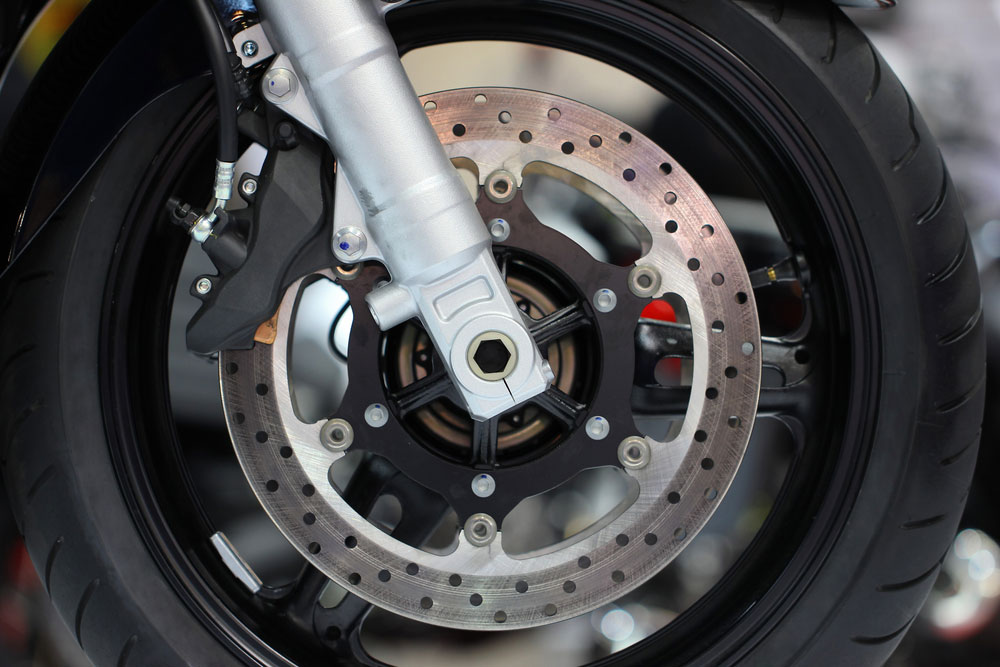 It is possible to damage the pads if you use too much force. Also, make sure whatever tool you use is clean so it does not contaminate the brake pads. Replace the wheel and squeeze the brake lever a few times to reset the pads.
It is possible to damage the pads if you use too much force. Also, make sure whatever tool you use is clean so it does not contaminate the brake pads. Replace the wheel and squeeze the brake lever a few times to reset the pads.
1 . what kind of brakes does your bike have?
- if you have disc brakes, then go straight to step 2.
- if your bike has a rim brake, then you need to release it. This procedure is approximately the same for all types of rim brakes: to release the V-brake, you need to squeeze the pads with your hands and pull out the arc, as shown in the figure. nine0015
2 . turn the bike upside down, it is quite stable on the handlebars and saddle. Be careful not to damage the equipment attached to the steering wheel (bicycle computer, bell, bicycle headlight, etc. )!
)!
3. How is your wheel fixed: a regular nut or an eccentric (a small lever)?
- if the wheel is fastened with nut , then two suitable wrenches must be taken. Throw one on one side, the second on the other, and turn one of the keys counterclockwise, holding the second in place. It is not necessary to unscrew the nuts to the end, but simply loosen them until the wheel can be safely removed. nine0015
- if the wheel is fastened with an eccentric , then everything is simple here - no tools are needed. We pull this eccentric towards ourselves, as shown in the figure, after which it is necessary to unscrew it a little more counterclockwise, holding it on the back side with your hand until it becomes possible to pull out the wheel.
4. pull the wheel up, and if you did everything right, it can be easily removed.
*on bikes with disc brakes, do not press the brake lever with the wheel removed, as this can compress the pads, and you will have to fiddle with them. nine0015
nine0015
The process of installing the front wheel is the reverse of removing it.
1. insert the wheel back as it was. Do not confuse the direction of rotation of the wheel (written on the tire). Remember that your bike is turned upside down and you should think about the direction of movement. In the case of disc brakes, it is difficult to confuse, since it is necessary that the disc hit exactly between the pads.
2. tighten the nuts or tighten the eccentric nine0015
3. flip the bike
4. if you have rim brakes, then you need to return them to their original state. We check that the wheel does not hang out, spins freely and the brake functions, otherwise we check everything again point by point.
The process of removing the rear wheel is TOTALLY the same as the process of removing the front wheel. The installation process is also similar to the installation of the front wheel, with a small exception: it is necessary that the chain fits correctly. To do this, we bring the wheel to the attachment points, put the chain on the sprocket and then put the wheel in place. True, a situation may arise in which it seems to you that the chain is twisted, and in order to untangle it, you will need to remove it. This is not true. You just need to twist it back and forth, imagine how it was installed before on the stars and most importantly - do not panic. That seems to be all. Now you have mastered the art of removing and installing wheels. nine0015 LEARN MORE LEARN MORE LEARN MORE ASK A QUESTION 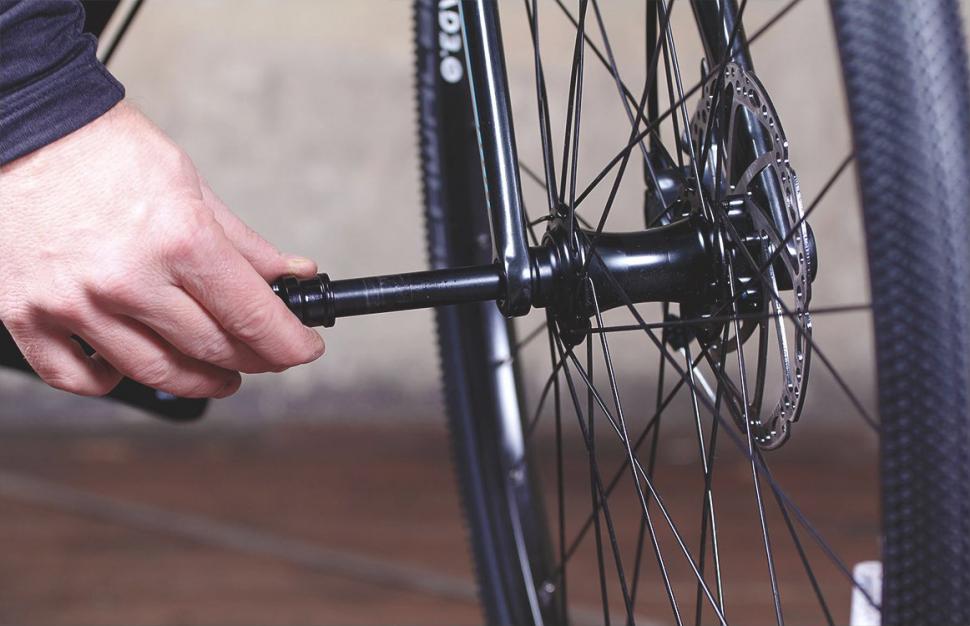 You don’t even have to look at the equipment hung from the back (you only have to remove the chain from the axle if it catches). nine0015
You don’t even have to look at the equipment hung from the back (you only have to remove the chain from the axle if it catches). nine0015
Rear wheel installation OTHER BLOG ARTICLES
Why do you need a bike bag
Rules for transporting a bicycle in transport
Winterizing your bike
ASK A QUESTION TO AN EXPERT
By submitting an application, I accept the terms of information transfer Book in store
TABLE OF CONTENTS:
This article will cover the removal and installation of front and rear bicycle wheels.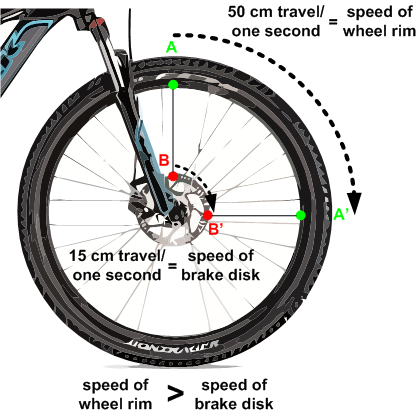
Related: How to choose wheels for a bicycle?
Start with the bike if possible. It should be installed on the left side when removing the rear wheel. Do not stand the bike in an upright position without a rear wheel as this may damage the rear derailleur. nine0015
1. Rear wheels : set the switch to the outer gear and inner front wheel chain. This will loosen the chain and make the wheel easier to remove.
2. Disconnect the brake rim, if equipped. Typical MTB and road brake release mechanisms are shown below.
Note : No release shoes required with disc brakes. Also, with hydraulic disc brakes, do not depress the brake lever when removing the disc from the bike. Otherwise, the pads will close and it will be very difficult for you to put the wheel back on the bike. Use a specially designed spacer such as PP-1.2 if necessary. nine0015
3. Disconnect the wheel from the frame :
Disconnect the wheel from the frame :
4. On the front wheel - simply guide the wheel down and out of the fork. For rear wheels - pull rear shifter to clear chain screws. Lower the wheel down through the brake pads and forward to clean the chain and shift mechanism.
Some shifters have a clutch mechanism that makes them difficult to turn. They have features that make it easy to remove the wheel. nine0015
The wheels must be properly installed on the bike frame. Skew can lead to problems with shifting and adjusting the bike. If the wheel is not securely fastened, it may fall off while riding and injure the cyclist. nine0015
Solid axle bushings use nuts on the axle on the outside of the trim on the frame. The axle nut has a washer built into it or a separate washer. If the washer has teeth or knurling, then they are connected to the recess to secure the wheel. Lubricate the threads on the axle when the wheel is mounted on the bike.
It is often easier to install the front wheel when the bike is on the ground. When placing the bike on the ground, the axle must be completely in the pad on the frame.
When placing the bike on the ground, the axle must be completely in the pad on the frame.
1. Make sure the cam lock lever is in the open position and that its brake mechanism is open. nine0015
2. Fit the wheel into the trim on the frame. Make sure the hub is fully seated in the frame or fork.
3. Tighten the wheel:

4. Determine the closing end position of the lever. Turn the front arm and adjusting nut so that the arm ends up at the front of the fork only. Install the rear arm between the chain support and the seat. Reposition the lever as needed if it is not fully closed. nine0015
5. Remove the brake mechanism again, if applicable.
6. Make sure the wheel is in the center of the frame or fork. Loosen the nuts on the axle and, if necessary, adjust the center of the wheel in the frame and tighten again.
7. Make sure the rim of the brake shoes is centered on the wheel and adjust as needed.
The eccentric mechanism for securing the wheel axles uses a hollow hub axle provided with a shaft, a lever that acts as a cam mechanism, and an adjusting nut. The cam forms tension on the shaft and pulls, and the adjusting nut is pressed tightly against the lining on the frame. This tension securely holds the wheel on the frame. nine0015
The adjusting nut determines the amount of tension on the lever of the eccentric mechanism for fixing the wheel axles and the cam. Lubricate the cam mechanism if it is sticky or dry.
Lubricate the cam mechanism if it is sticky or dry.
The eccentric mechanism for fixing the wheel axles is equipped with two conical springs. The small end of the spring faces the axis, and the large end surfaces outward. These springs make it easier to install the wheel. If one or both springs are twisted or damaged, they can be removed. They don't matter once the wheel is firmly attached to the bike. nine0015
The so-called "open cam" may require more tension. These levers have a cam mechanism and must be lubricated frequently.
Bicycles using disc brakes on the hub need special attention. Wheel disc brake systems (Dual Pivot, Linear Pull, Cantilever, Sidepull, etc.) generally do not use significant axle pressure. Disc brake systems are fork mounted and apply load to a rotor that is attached to the hub. nine0015
There is an external load on the hub axle that tends to push the axle out of the frame pad. It is especially important to secure the pin properly in disc brake systems.